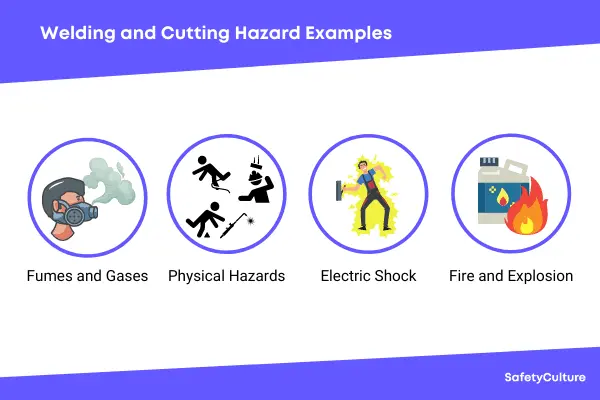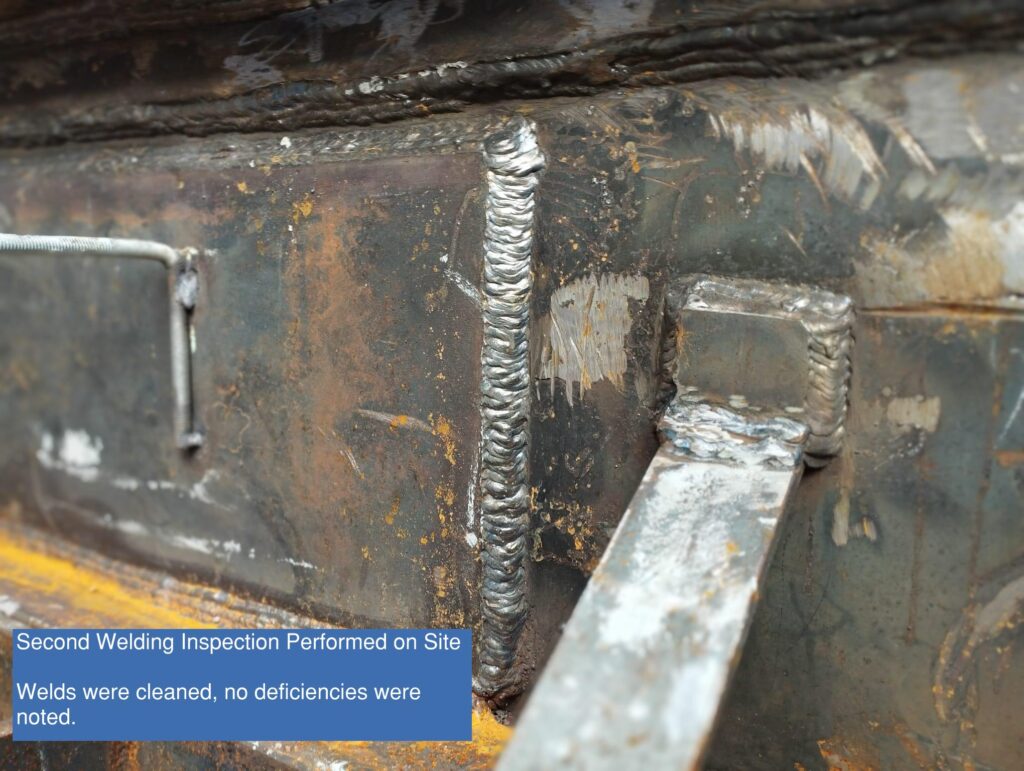The Ultimate Guide to Welding Inspection Racine for Industrial Standards
The Ultimate Guide to Welding Inspection Racine for Industrial Standards
Blog Article
Ingenious Techniques to Fillet Weld Evaluation and Testing: Enhancing Weld Quality and Conformity Specifications
In the world of welding, the quality and honesty of fillet welds play a vital duty in ensuring the structural soundness and dependability of various industrial parts. With the continuous drive for improved performance and compliance with strict requirements, the exploration of cutting-edge methods to fillet weld examination and testing has come to be essential. As industries progress, the standard techniques may no more be sufficient in satisfying the demands of modern welding applications. By embracing advanced innovations and techniques, a brand-new horizon of possibilities emerges in the realm of weld quality evaluation and adherence to conformity requirements.
Advanced Non-Destructive Screening Methods
Using state-of-the-art modern technologies, progressed non-destructive screening techniques play a vital role in making sure the honesty and quality of fillet welds. These approaches, such as phased array ultrasonic screening (PAUT) and magnetic particle testing (MPT), deal detailed understandings right into the weld's internal framework without causing any kind of damage to the product. PAUT, for example, utilizes numerous ultrasonic components to inspect the weld from different angles, offering a thorough visualization of potential defects like absence of fusion or splits.
Similarly, MPT is efficient in discovering surface-breaking flaws by applying a magnetic field and iron fragments to the weld area. This method is specifically valuable for identifying discontinuities that may jeopardize the weld's strength. By utilizing these sophisticated non-destructive screening techniques, weld assessors can accurately analyze the high quality of fillet welds, guaranteeing compliance with industry standards and regulations. The ability to discover problems early on not just boosts weld high quality however likewise protects against costly rework or failings in architectural honesty, highlighting the significance of these cutting-edge screening techniques in welding evaluations.
Robotics and Automation in Examination
The integration of robotics and automation has actually changed the examination process for fillet welds, improving performance and accuracy in high quality evaluation. Robotics provide exact control and repeatability in evaluating welds, ensuring consistent and reputable outcomes. Automated systems can be set to follow specific examination paths, ensuring detailed protection of welds and lowering the risk of human mistake.
Robotic evaluation systems outfitted with sophisticated sensing units can identify and determine weld attributes with high precision, providing comprehensive information for analysis. These systems can recognize issues such as fractures, absence of fusion, and porosity, allowing punctual rehabilitative actions to be taken. Furthermore, robotics and automation allow for real-time information collection and analysis, offering immediate responses to operators and facilitating fast decision-making processes.
Additionally, using robotics and automation in fillet weld examination enhances total efficiency by decreasing evaluation times and increasing evaluation throughput. By improving the evaluation process, suppliers can make certain weld high quality and compliance requirements are satisfied efficiently, eventually leading to cost savings and boosted item top quality.
Using Artificial Knowledge for Analysis
Artificial intelligence plays a pivotal role in boosting the performance and accuracy of evaluation in fillet weld assessment processes. AI formulas can swiftly process large amounts of information from weld evaluations, discovering issues or variances that might be challenging to identify with the naked eye - Welding Inspection Racine.
In addition, AI systems can gain from past examination data, consistently improving their capability to identify prospective problems and variances in fillet welds. This adaptive learning capability improves the total high quality control procedure, decreasing the chance of human mistake and making sure that welds meet the needed requirements. By integrating fabricated intelligence right into fillet weld analysis, sectors can achieve higher levels of browse around this site performance, uniformity, and conformity in their examination practices.
Portable Devices for On-Site Examination
 Enhancing field inspection performance, the fostering of mobile tools reinvents on-site evaluation processes for fillet welds. These tools use versatility and convenience, permitting examiners to conduct detailed evaluations in numerous a knockout post places, including difficult or remote environments. Mobile devices such as ultrasonic screening gadgets, magnetic particle assessment devices, and electronic radiography systems offer real-time data and high-resolution imaging abilities, enabling fast decision-making and prompt responses on weld quality.
Enhancing field inspection performance, the fostering of mobile tools reinvents on-site evaluation processes for fillet welds. These tools use versatility and convenience, permitting examiners to conduct detailed evaluations in numerous a knockout post places, including difficult or remote environments. Mobile devices such as ultrasonic screening gadgets, magnetic particle assessment devices, and electronic radiography systems offer real-time data and high-resolution imaging abilities, enabling fast decision-making and prompt responses on weld quality.One substantial benefit of portable devices is their capacity to streamline examination treatments, reducing downtime and enhancing general productivity. Inspectors can quickly move these devices to different task websites, eliminating the demand for delivering heavy machinery or components to off-site facilities. Additionally, the portability of these tools promotes cost-effectiveness by decreasing transport expenditures and accelerating assessment timelines.
In addition, the use of portable tools for on-site examination advertises positive quality control actions, as examiners can immediately determine and deal with any type of potential welding issues or discrepancies. By integrating these ingenious innovations into on-site evaluation methods, welding specialists can make sure compliance with industry requirements and boost weld high quality, inevitably leading to enhanced structural stability and security in numerous welding applications.
Combination of Information Management Solution
Having optimized on-site evaluation procedures with the use of portable devices, the following stage includes the smooth assimilation of data monitoring systems to additionally enhance efficiency and information evaluation capabilities in fillet weld assessment and screening. Welding Inspection Racine. By incorporating information monitoring systems right into the examination procedure, companies can enhance information collection, storage, and analysis. This assimilation permits real-time surveillance of weld top quality, prompt identification of flaws, and timely decision-making to rectify any kind of concerns that may arise during the examination procedure
Information management systems play a crucial duty in streamlining examination information, facilitating very easy access for authorized employees, and making certain information stability and safety. With the assimilation of these systems, examiners can produce thorough reports, track historic information for trend analysis, and improve overall process performance. The integration of information management systems makes it possible for seamless interaction in between different stakeholders entailed in the assessment procedure, promoting partnership and improving total quality control actions. Inevitably, the assimilation of data administration systems serves to elevate the standards of fillet weld evaluation and testing, ensuring compliance with sector guidelines and boosting weld quality.
Final Thought
Finally, ingenious approaches from this source to fillet weld assessment and screening have actually considerably enhanced weld high quality and conformity standards. Advanced non-destructive screening approaches, robotics, automation, expert system, mobile devices, and information monitoring systems have actually transformed the means weld assessments are conducted. By utilizing these technologies, industries can ensure that welds fulfill the required quality standards and policies, inevitably improving overall efficiency and safety in welding procedures.

By using these advanced non-destructive testing techniques, weld examiners can accurately analyze the high quality of fillet welds, making certain conformity with sector criteria and policies. Portable tools such as ultrasonic screening devices, magnetic fragment examination equipment, and digital radiography systems provide real-time data and high-resolution imaging capacities, making it possible for fast decision-making and instant feedback on weld high quality.
Having actually optimized on-site examination processes through the usage of portable tools, the following stage involves the seamless combination of information administration systems to further boost performance and information evaluation abilities in fillet weld examination and testing (Welding Inspection Racine). Inevitably, the assimilation of information management systems serves to raise the criteria of fillet weld evaluation and testing, making certain compliance with market laws and enhancing weld quality
 In final thought, ingenious approaches to fillet weld evaluation and testing have dramatically improved weld top quality and compliance standards.
In final thought, ingenious approaches to fillet weld evaluation and testing have dramatically improved weld top quality and compliance standards.Report this page